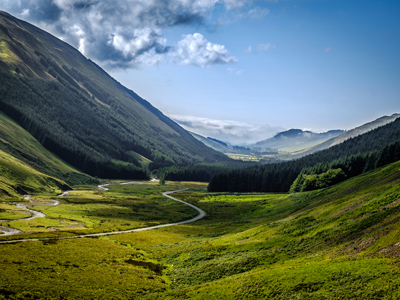
Glacial Erosion Landforms
During your studies of GCSE physical geography, you will learn about how different forces of nature shape the Earth's surface. One of the significant forces that has affected the British landscape is ice. You need to know how glacial erosion landforms have been created and to be able to give some examples of each.
During the last ice age, there were times that almost the whole of Britain was covered in glaciers and ice sheets. These advanced and retreated several times during the 120,000 years or so that the ice age lasted. With each advance, the ice eroded the landscape a little more, leaving traces that we can see today. In the lowland areas, this is not as evident as in the uplands where you can see many glacial erosion landforms.
The most obvious feature of glacial erosion is the classic U-shaped valley.
Ready for more?
not all...
quizzers. Try to win a coveted spot on our Hall of Fame Page.







